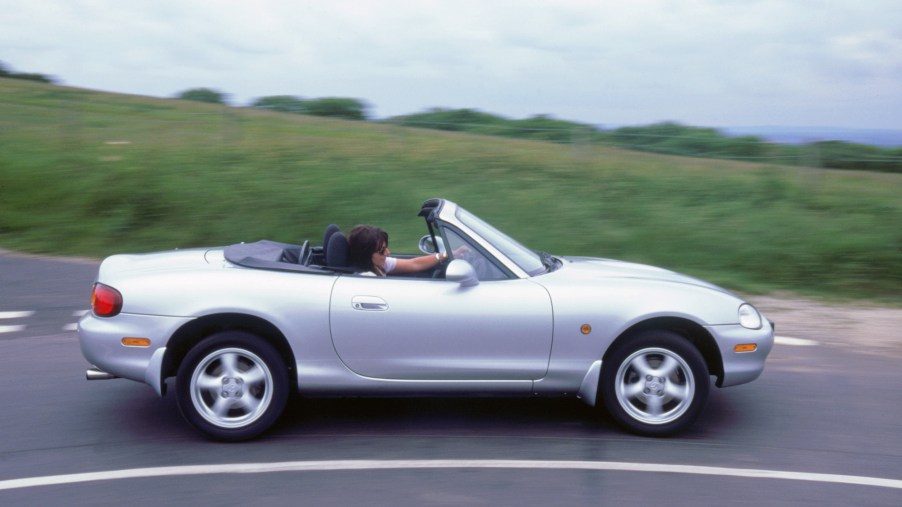
What Was So Bad About the 1999 Mazda Miata That ‘Fast & Furious’ Killed It?
When the 1999 Mazda Miata appeared, it was a big deal. The automaker had masterfully worked its little roadster. It was a labor of love that valued style and romanticism of the open road over sales metrics, Automobile Magazine reported.
The 1999 Mazda Miata also nearly appeared in the original Fast & Furious film. So why didn’t this beloved roadster make it onto the silver screen?
The 1999 Mazda Miata
In 1999, Mazda reinvented one of the most iconic cars of the last 20 years. The redesigned Miata was faster and more robust, Autoevolution reports. The A-pillars were the same, but the body was lower with shorter overhangs and a reshaped front air intake.
The 1999 model also sported oval headlights instead of the previous pop-up headlamps, Autoevolution reports. It had new taillights too. The wheels filled out the wheel wells, the sills bulged a little, and the midsection was much-improved. The overall vibe of the new Miata: stylish and sexy.
The ’90s brought many changes for the Mazda Miata, from bold new colors to various special performance packages. Its 1.8-liter engine was extensively reconfigured to give the Miata a boost to 140 hp. The torque also got a bump from 114 to 119 lb-ft.
With the power boost and a 44-pound weight loss, the 1999 Mazda MX-5 Miata could go from 0 to 60 mph in just eight seconds. Its weight was evenly balanced between the front and back. It came standard with a five-speed manual transmission standard and also offered an available four-speed automatic.
Mazda made other updates to the Miata’s suspension, steering, and structure. The changes improved stability, handling, and ride comfort.
When ‘Fast & Furious’ came calling
The first Fast & Furious film’s production team considered using the 1999 Mazda Miata in the film, said Craig Lieberman, a technical adviser on the franchise’s first few movies.
The Miata met their criteria. They were considering only current cars sold in the U.S. at the time, which left out older vehicles. The filmmakers also left off European supercars because the movie focused on the LA tuner culture. Plus, cars chosen needed to suit the individual character, fit within the movie’s modest budget, and handle action sequences.
According to Lieberman, the producers considered using the 1999 Mazda Miata for Johnny Tran’s character. But ultimately, they chose a Honda S2000 because the Miata wasn’t “masculine enough.”
While the notion might seem absurd now, the Miata was viewed as a woman’s car and not on the same level as many Japanese tuner cars of that era.
The 1999 Miata’s pros and cons
Competing against the likes of the BMW Z3, Mercedes SLK, and Porsche Boxster, the 1999 Mazda MX-5 Miata is an overall better value, Edmunds reports. It’s better-looking than its predecessor and better in every way thanks to the redesign.
But it wasn’t perfect. Cabin space was tight, and there wasn’t a lot of cargo space either. Its top was also redesigned and made lighter even with its new glass window. And the convenient handle letting you reach over your shoulder from the front and pull the top back up disappeared from the 1999 model. As Automobile Magazine points out, that isn’t a bonus.
The 1999 Mazda Miata offered great visual style with an exciting ride. Automobile Magazine said the Miata wasn’t a high-speed car, but it was hard to do better when it came to cruising down the highway. Its responsive steering and smooth-shifting transmission made it a joy to drive.


